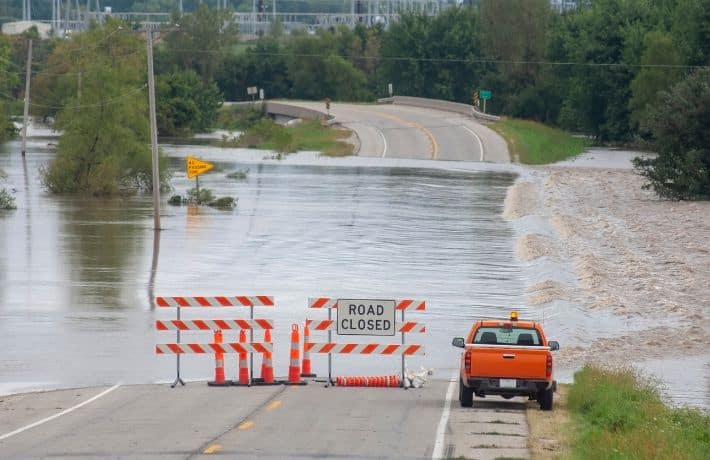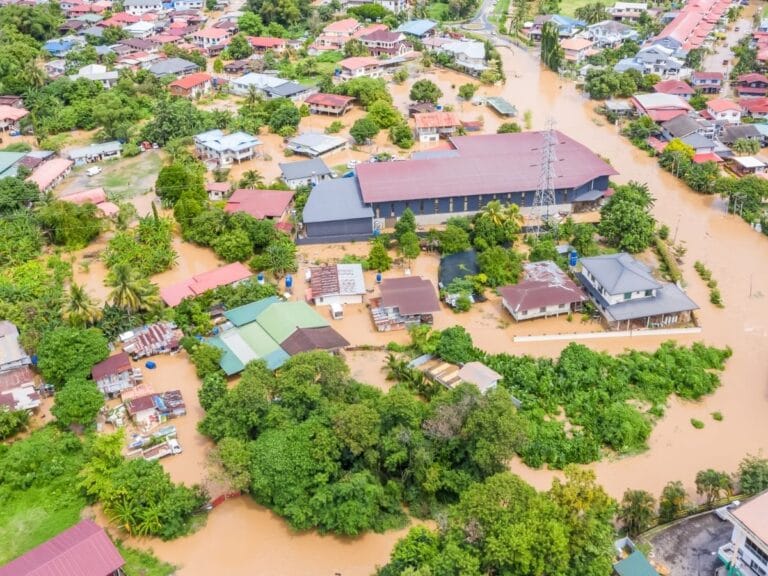ASFPM-2011 Legislative and Policy Priorities
Overarching Policy Issues
Promote integration of hazard mitigation into federal programs, legislation and regulations.
Support the work of the Federal Interagency Floodplain Management Task Force to identify impediments to successful flood loss reduction and incentives to promote wise floodplain and flood risk management and protection of natural floodplain functions.
Encourage agency implementation of the Executive Order on Sustainability and inclusion of hazard risk reduction in federal agency and legislative definition of sustainability/resilience.
Promote use and enhancement of federal government technical assistance programs and capabilities to assist state and local governments in identifying and utilizing a full range of Flood Risk Management and loss reduction methodologies.
Provide education about the policy nexus between the flood maps, levee accreditation and flood insurance issues and urge complementary policy, program and legislative development.
Monitor climate change, adaptation and energy bills in the 112th Congress to seek incorporation of natural hazard adaptations and promotion of needed research on impacts.
NFIP Reform
Participate in all available ways (work with members, Chapters and partners) in FEMA’s Re-Thinking the NFIP effort and help to inform others on and off the Hill about the significance of FEMA’s important effort and expected recommended options.
Encourage re-authorization of the NFIP before it expires again on September 30, 2011, but urge a 2-year authorization to allow time for Congressional consideration of FEMA’s recommendations into passage of significant reform legislation.
Continue to share with Administration and Hill ASFPM perspectives on major issues that should be considered during development of NFIP reform.
Reauthorize the Repetitive Loss programs and recommend improvements to Severe Repetitive Loss law and to the Guidance to address problems in SRL program implementation
ICC reforms–Emphasize need for implementation of changes to ICC passed in 2004 reform Act. Push for FEMA rulemaking needed to implement all ICC enhancements in that law.
Support Mandatory flood insurance in residual risk areas of structural flood control measures
Seek authority for FEMA to delegate to qualified states the administration of the NFIP-funded mitigation grant programs (similar to current authority to delegate HMGP).
Support appropriate movement toward actuarial rates for flood insurance.
Support FEMA upgrades to NIFP rules and regulations in CFR 60.3.
WRDA (Water Resources Development Act-USACE authorities)
Promote effective flood policy issues in any WRDA bill in 2011 and in broad national policies, such as the national planning Principles and Standards and water resources bills
Discuss these policy items for the next WRDA with partners and Congressional staff:
A process for development and governance of a National Levee Risk Management Program that ties land use to federal funding, with incentives for state delegation
Promote use of a sliding cost share for Corps’ programs based on positive State and local action and program, if adequately administered and enforced
Encourage incentives for states and communities that go beyond federal standards
Expand FPMS program to allow for more Corps technical assistance to States & Locals
Stafford Act
Stafford Act revisions—support provisions that promote effective mitigation both pre and post disaster, in a shared responsibility with all levels of gov’t and property owners
HMGP
Encourage progress on program delegation to states as already authorized
Seek other modifications to speed the approval of HMGP projects post-disaster
Promote legislation and policies that require mitigation in post disaster reconstruction, and that provide for mutual aid for post-disaster damage determinations and permitting
Press for changes on cost-effectiveness requirements to allow some projects (severe repetitive loss or Substantially Damaged properties in the floodway) to be automatically “cost-beneficial”, and statutorily enact policy FEMA currently has that substantially damaged building are cost effective for acquisition/demolition.
Any New Economic Stimulus or Jobs Bill
Educate Members of Congress on the public safety and long term cost saving aspects of incorporating hazard mitigation in all investments in infrastructure
Promote green infrastructure and non-structural mitigation, which creates jobs, reduces spending, promotes personal responsibility and maintains natural systems and reduces O&M costs
Encourage consideration of all mitigation options under FEMA’s mitigation programs, (but not to fund levee repairs) or consider possible mitigation tax credit
Promote 500 year flood hazard protection level for critical infrastructure
Promote jobs funding that would result in long-term sustainability for communities and people, such as mitigating all elementary schools in the nation from natural and technological hazards. This would create jobs, protect children and reduce future spending
Appropriations/Budgets (drafted prior to release of FY ’12 requests)
Study FY ’12 budget requests for departments and agencies with programs associated with flood insurance and flood risk management; prepare outside witness testimony when requested- (FEMA, Corps, Interior – USGS, RTCA, FWS, EPA, NRCS (EQIP, CRP, WRP, Small Watersheds), Commerce (NOAA, NWS)
Support USGS streamgage programs, particularly NSIP (including new technology).
Support funding for Risk MAP at least at current levels to identify, assess and mitigate risk
Urge substantial funding for Corps’ FPMS and PAS programs and increased emphasis on Corps technical assistance for localities and States.
Support funding for Corps’ levee inventory for all levees in the nation
Other Possible Legislation in 2011
Support legislative initiatives that promote building state capability for flood risk mgt and that provide a sliding cost share for state and local programs that better reduce risk to taxpayers
Support laws and policies that require actuarial flood insurance in residual risk areas
Promote effective laws to map and manage coastal hazards, with strong state involvement
Support an Interagency Task Force to foster federal water program and policy integration
Support legislation that encourages community sustainability, which must address natural hazards as a key component of sustainability
Participate in discussions concerning the 2012 Farm bill conservation programs
Support Reauthorization of National Dam Mgt program, moving to stronger state roles
Analyze any Federal Catastrophic backstop for disasters—consider private reinsurance option instead of federal taxpayer involvement
Flood Risk Management, including Managing Catastrophic Losses
Continue strong participation in the Intergovernmental Flood Risk Management Committee (IFRMC), with USACE, FEMA, ASFPM and NAFSMA.
Continue active support for Federal Interagency Floodplain Management Task Force.
Utilize ASFPM Foundation 2010 Forum findings on Flood Risk Mgt national policy/programs
Educate decision makers, media and public on the need for public policy that supports the basic concepts of “those who live at risk should pay for the cost of living at risk” and not externalize that cost to others, esp. the federal taxpayers.
Support legislation establishing Presidential blue ribbon commission to study and make recommendations on the problem of catastrophic losses from disasters.
Promote inclusion of mitigation incentives and disincentives in any legislation providing for catastrophic losses and/or reinsurance, and community sustainability
Work with other organizations, including the insurance industry and State Insurance Commissioners (NAIC) to promote good policy and laws on hazard insurance
Coastal Policy and Programs
Support legislation to reauthorize the Coastal Zone Management Act. Encourage incorporation of outcomes of NOAA’s “Climate Service” efforts.
Monitor and support modernization of CBRS maps as well as appropriate coordination of this effort with FEMA’s RiskMAP.
Comprehensive National Water Policy
Follow, analyze and comment on legislation addressing water policy or watershed mgt
Promote establishment of an entity to foster federal water program and policy integration
Urge the Administration to clarify federal jurisdiction under the Clean Water Act
Continue to monitor progress of draft Principles and Standards and participate in the process to promote comprehensive water resources planning and coordination.
Levee Risk Management and Levee systems
Urge careful Congressional consideration of the Levee Safety Committee’s report, but urge Congress to seek and include significant added outside input, which is currently lacking.
Work to include land use, flood risk, and other more comprehensive management approaches to levee risk management in any legislation to establish a national levee risk mgt program.
Promote and facilitate inclusion of natural and beneficial functions of the floodplain in flood risk management context for a national levee risk mgt program
Encourage coordination of Congressional committee response to levee and map issues
Support mandatory flood insurance in residual risk areas behind levees
Promote a strategy for retreat of levees (setback from river edge) to relieve pressure on levees and reduce the risk to natural floodplain functions and resources
Promote study of any liability exemption for levee design, construction, inspection or certification before any levee liability legislation is enacted
Follow/comment on dam grant funding legislation, and ensure NFIP participation for grants
Mapping—Risk MAP
Continue to work with and assist FEMA as Risk MAP is developed and refined (internally, as well as through legislation, regulations and guidance).
Continue quarterly Risk MAP meetings with FEMA, NAFSMA & map contractors
Resist legislative actions to delay issuance and adoption of new maps.
Provide leadership in the Flood Map Coalition of broad stakeholder interests.
Encourage and support integration of Corps levee inventory and condition of levees information with FEMA’s flood mapping data on levees
Urge FEMA to delegate long-term map maintenance to state, regional and local governments with legislated water management authority. Priority should be to governments that have higher flood hazard mapping standards (floodway rise less than 1.0’, compensatory storage, channel migration zones, habitat buffers, future conditions hydrology, etc)
Consider support for reauthorization of the National Geologic Mapping Act of 1992.
Mitigation
Seek and pursue opportunities to include flood hazard mitigation considerations in other federal programs – such as NOAA, Transportation, Agriculture, HUD, EPA and Interior.
Work to elevate the importance of hazard mitigation at DHS and at FEMA.
Promote inclusion of mitigation considerations in PA, providing input to FEMA PA review
Work with NEMA on the Mitigation Alliance effort with other interested partners
Support and encourage FEMA’s efforts to establish uniformity of mitigation requirements for its grant programs, including the SRL programs.
SRL guidance – Urge Congressional review of the legislation and aspects of the FIRA 2004 that interfere with efficient and effective Severe Repetitive Loss program implementation.
Promote a state partnership program for delegation of mitigation programs to qualified states.
Tax Provisions
Support a hazard mitigation tax credit, if appropriate.
Oppose legislation to provide a tax credit to subsidize flood insurance premiums.
Support exemption of mitigation grants from taxation as income


